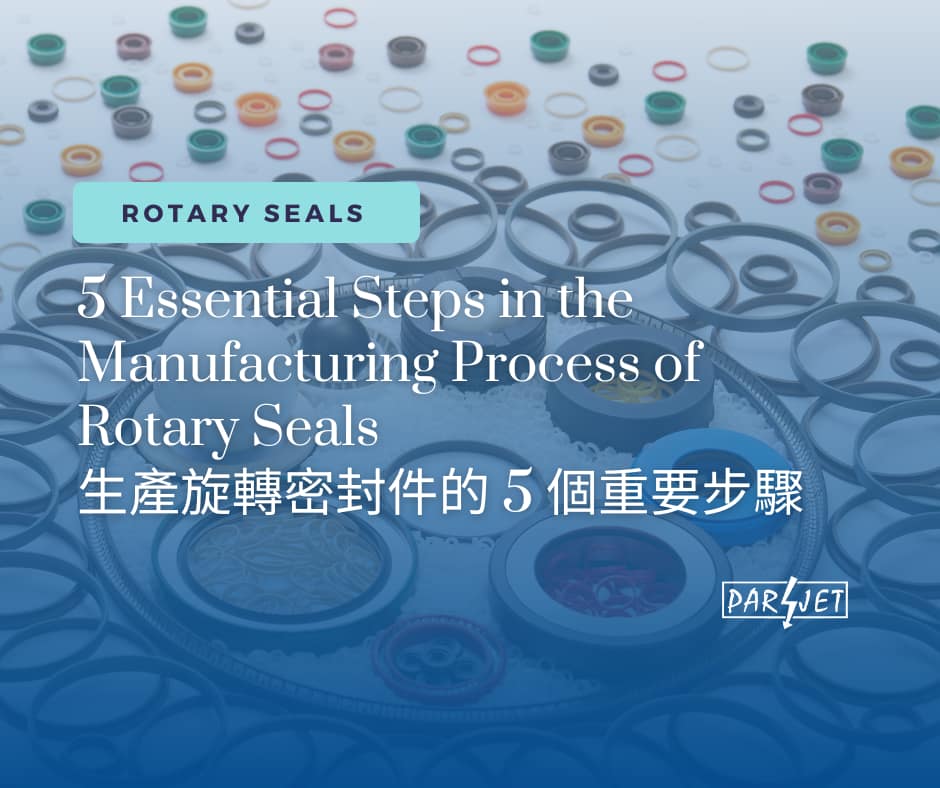5 Essential Steps in the Manufacturing Process of Rotary Seals
Rotary seals are important in maintaining the efficiency and reliability of various mechanical systems by preventing leakage and contaminants. The manufacturing process of these seals is critical, requiring meticulous attention to detail and precision at every step. This blog explains the five essential steps in producing rotary seals, highlighting the technology and craftsmanship involved in creating components that meet the highest industry standards.
1. Identify and determine the operating conditions
Before designing any rotary seals, it is important to identify the condition of the application. This includes temperature, pressure, media, groove design and mating surfaces. With dynamic applications (reciprocating, rotary and oscillating), the types of motion and speed are also important factors. The above factors are the key step to building an effective sealing solution. Additionally, the expected sealing life expectancy will dictate the following steps.
2. Material Selection
Choosing the right material is paramount in the production of rotary seals, as the material must align with the specific operational demands and environmental conditions of the application. Common materials used for sealing purposes include Nitrile Rubber (NBR), Viton, PTFE (Polytetrafluoroethylene), Silicone, PEEK and more). However not all of them are suitable for rotary sealing purposes. Selection criteria include compatibility with the media (oil, water, chemicals), resilience to temperature extremes, pressure ratings, and wear resistance. Some factors to consider when choosing the right material selection:
• Chemical compatibility
• Temperature resistance
• Coefficient of Friction
• Mating surfaces (Roughness and Hardness)
• Sealing Life expectancy
• Torque requirement
• FDA regulations
3. Design and Engineering
This step involves translating operational requirements into a detailed seal design using advanced CAD software. Engineers must consider factors such as:
• Seal geometry: Shape and dimensions tailored to fit precisely within the machinery.
• Load conditions: Anticipated pressures and forces that the seal will need to withstand.
• Life expectancy: Finding the right balance between torque and leakage is the key in sealing a seal. Higher torque provide better sealing performance but it can also lead to higher wear and lower sealing life. On the other hand, lower torque reduces friction and longer sealing life but may have higher leakage potential.
• Dynamic and static states: Behavior under both moving and stationary conditions. The design phase also includes finite element analysis (FEA) simulations to predict how the seal will perform under various load and temperature conditions, ensuring optimal functionality before moving into production. It also contributes to predicting the sealing life expectancy of various design.
4. Molding and Tooling
Manufacturing rotary seals often involves custom tooling and molding processes. The tooling design must be precise, as it directly impacts the quality and consistency of the final product. The steps include:
• Tool fabrication: Creating mold based on the final seal design, often from high-grade steel to withstand repeated use without deforming.
• Machining: For metal and some PTFE seals, where the seal profile is machined into the desired shape.
5. Finishing and Quality Control
The final steps ensure that every seal meets precise specifications and is free from defects:
• Trimming and finishing: Excess material is removed, and the seal surface is finished to the required smoothness.
• Inspection: Seals undergo visual and dimensional inspections using calipers, micrometers and precise measuring tools such as Keyences.
• Testing: Sometimes seals are performed under certain simulated operating conditions to verify that the seals meet all functional requirements.
Conclusion
The production of rotary seals is a sophisticated process that combines advanced material science, precise engineering, and rigorous quality control. Each step, from identifying the problem to the final testing, is crucial in developing seals that provide reliable performance in demanding environments. Parjet is committed to excellence in every phase, ensuring that our seals deliver unmatched durability and efficiency.
For more detailed insights into our specific rotary seal solutions and to discuss your unique sealing needs, visit Parjet’s Products Page.






